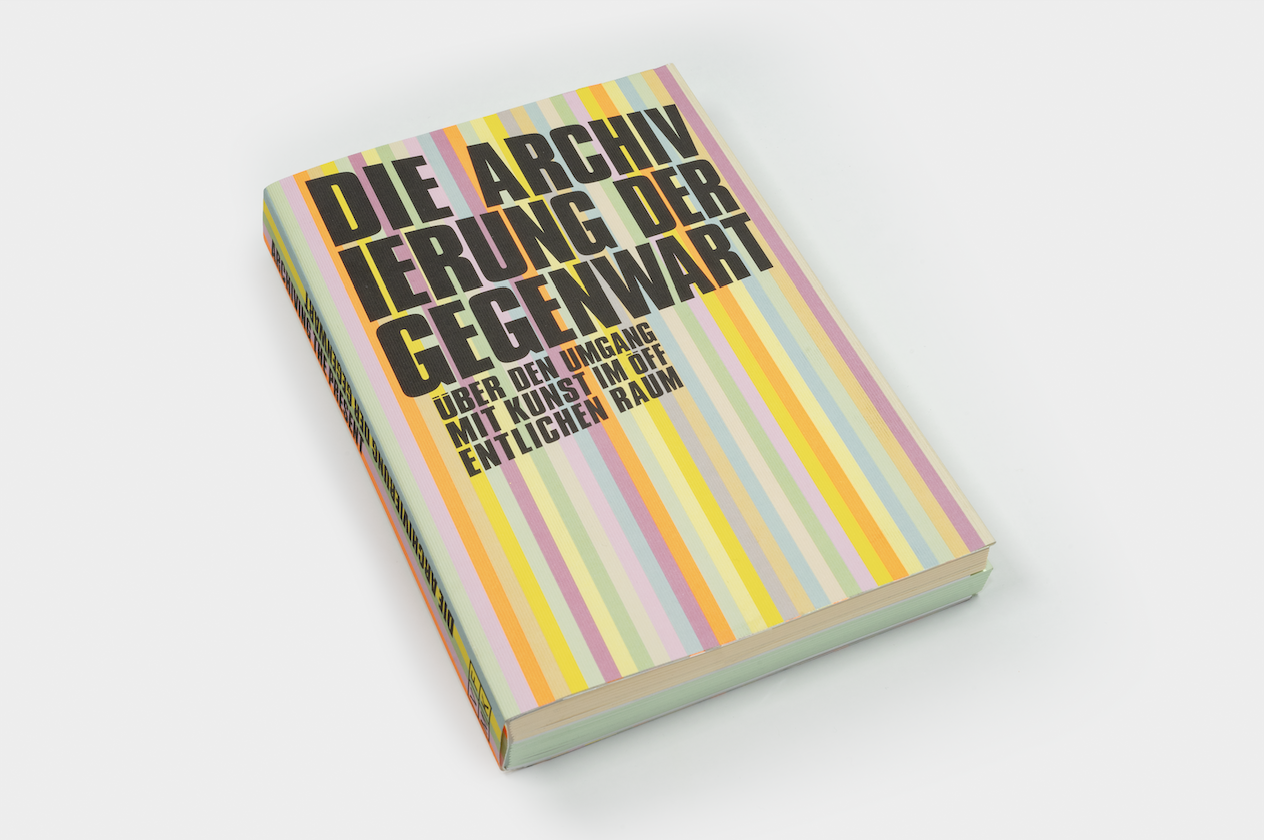What does it mean to preserve the present? How do we determine which artistic works deserve to endure, and what structural conditions are needed to support both continuity and change in the public art landscape?
These were the questions at the heart of The Archiving of the Presence (original title: The Archiving of the Present), a publication developed as a reflection and extension of the 2021 interdisciplinary conference of the same name. Organized by BIG in cooperation with the University of Applied Arts Vienna, the conference brought together experts across disciplines to explore the complexities of preserving and archiving art in public spaces. The book captures this discourse, expanding the conversation through a collection of insightful essays and a distinctive design concept that reflects the themes of layering, preservation, and perspective.
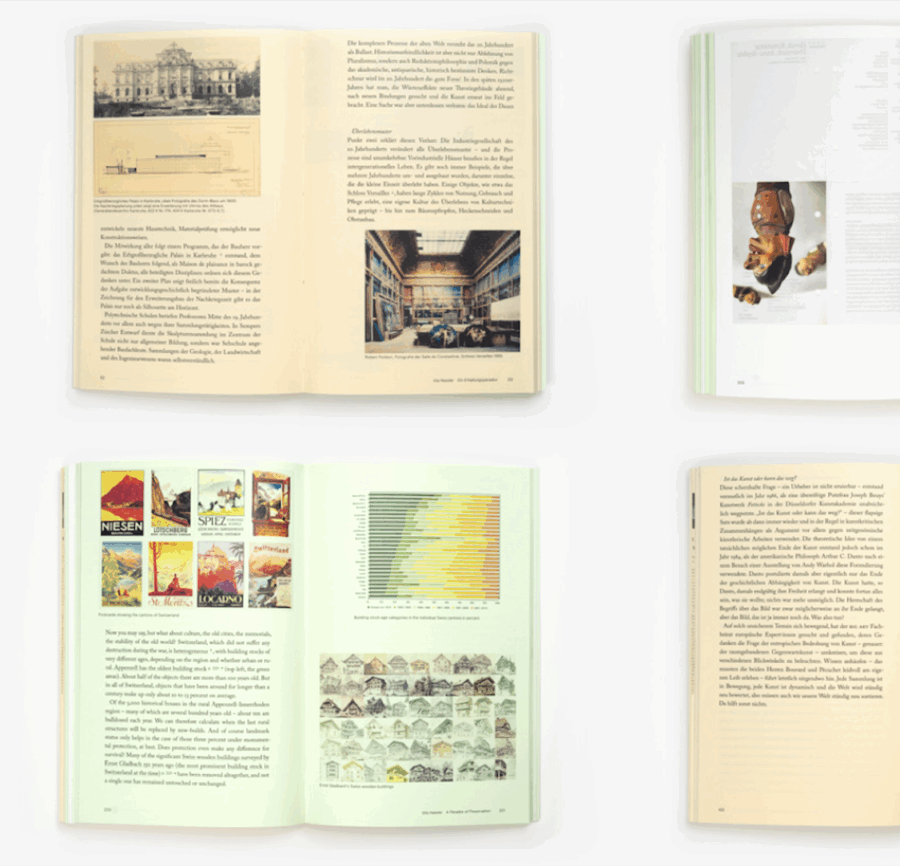
A book made of books!
Designed by the Viennese duo Katarina Schildgen and Paul Gasser , The Archiving of the Presence is more than a documentation — it’s an object that embodies the idea of archival structure. The publication comprises five sections, each presented as its own booklet varying in size, color, and material, nested within the larger book. This deliberate structure offers immediate orientation and visual clarity, much like opening a carefully curated archive.
The typography and layout remain consistent throughout, tying the varied content together. The irregularly cut front edge of the book — where some sections stick out while others retreat — emphasizes its layered nature. On the cover, muted tones are punctuated by neon orange stripes, a graphic continuation of the inner concept that adds a sense of urgency and vibrancy to the otherwise pale palette.
The choice of paper is as much a part of the narrative as the words themselves
Each paper in the publication was carefully selected to complement and reinforce the book’s conceptual and visual structure. The bilingual format, with texts in both German and English, is separated not just by language but by two different pastel colored papers , creating different atmospheres and enhancing readability.
To distinguish between the language sections and to evoke varying emotional responses, the designers used IQ Color papers in gray, green, and cream at 120g/m². These subtle pastel shades guide the reader visually and create distinct moods for each section. In contrast, Garda Matt Art , a coated paper at 100g/m², was used to make images stand out more vividly against the uncoated colored pages. For an artistic intermission within the book, Munken Lynx at 80g/m² was chosen for its soft, tactile surface, inviting a moment of pause and reflection.
The dust jacket is made from Twill , a material whose torn embossing not only adds a tactile quality but also visually disrupts and interacts with the printed stripe pattern underneath, reinforcing the book’s layered and archival aesthetic. All of these carefully selected papers are available by Europapier , underscoring the publication’s attention to quality and material storytelling.
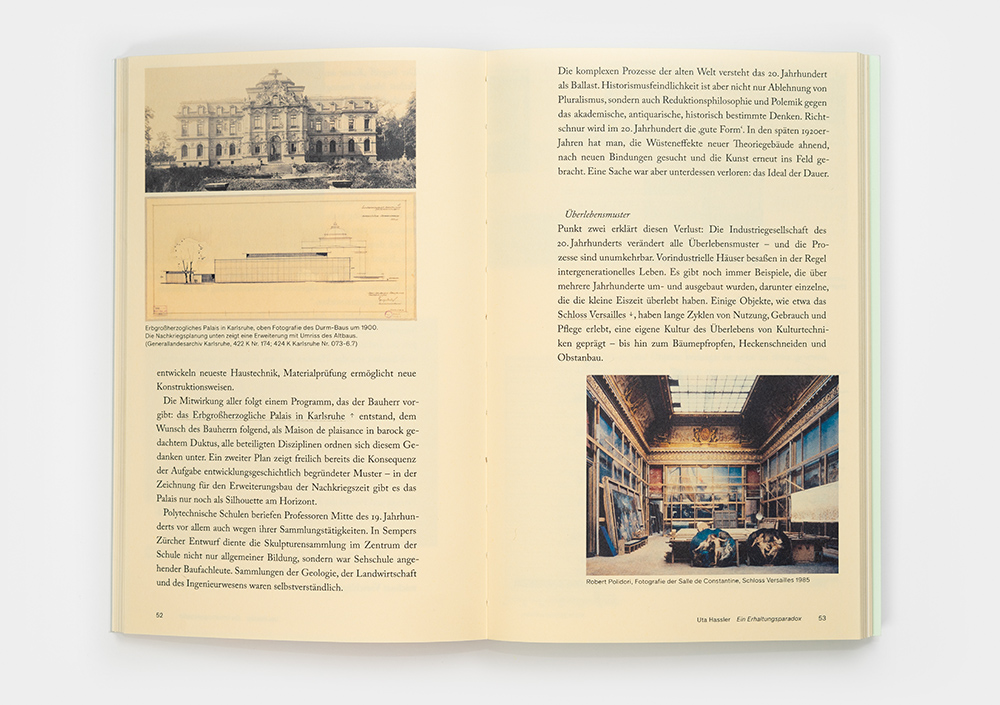
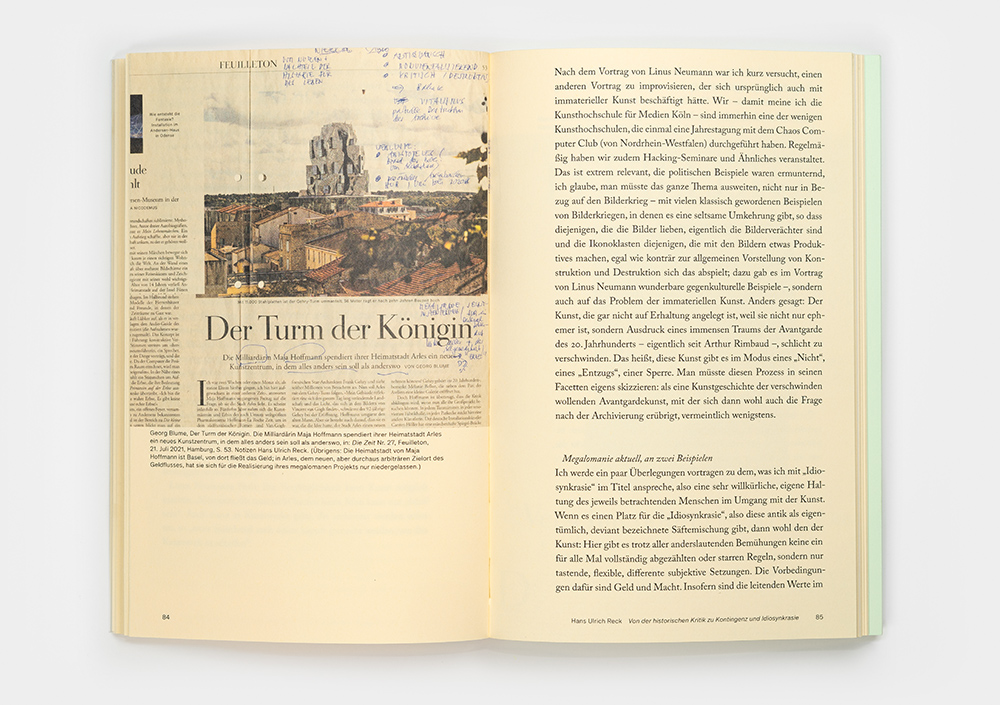

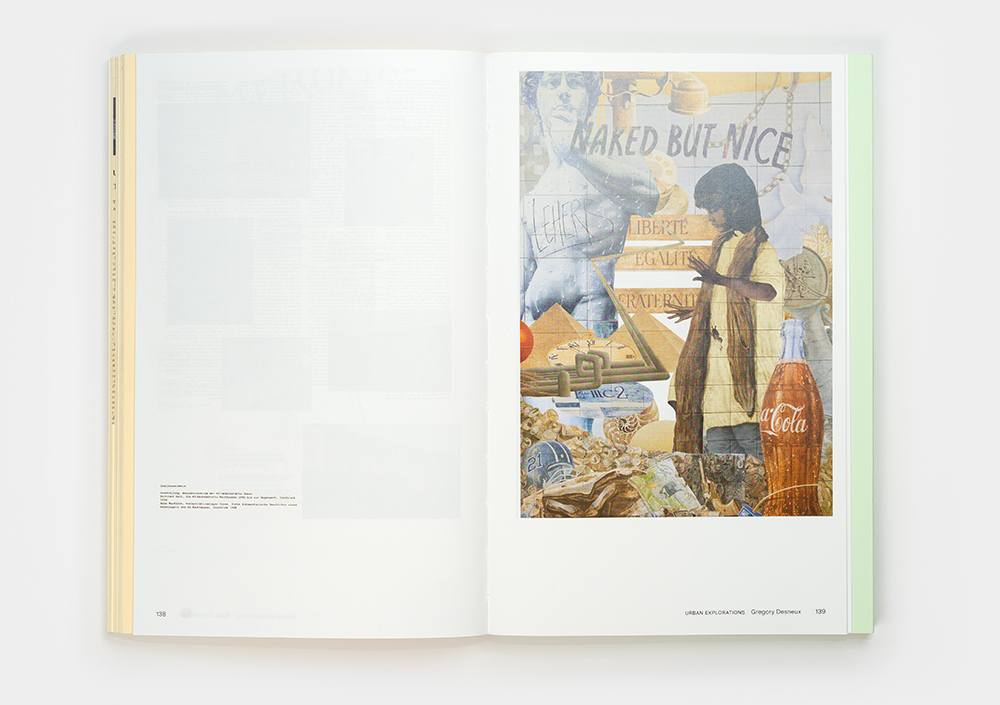
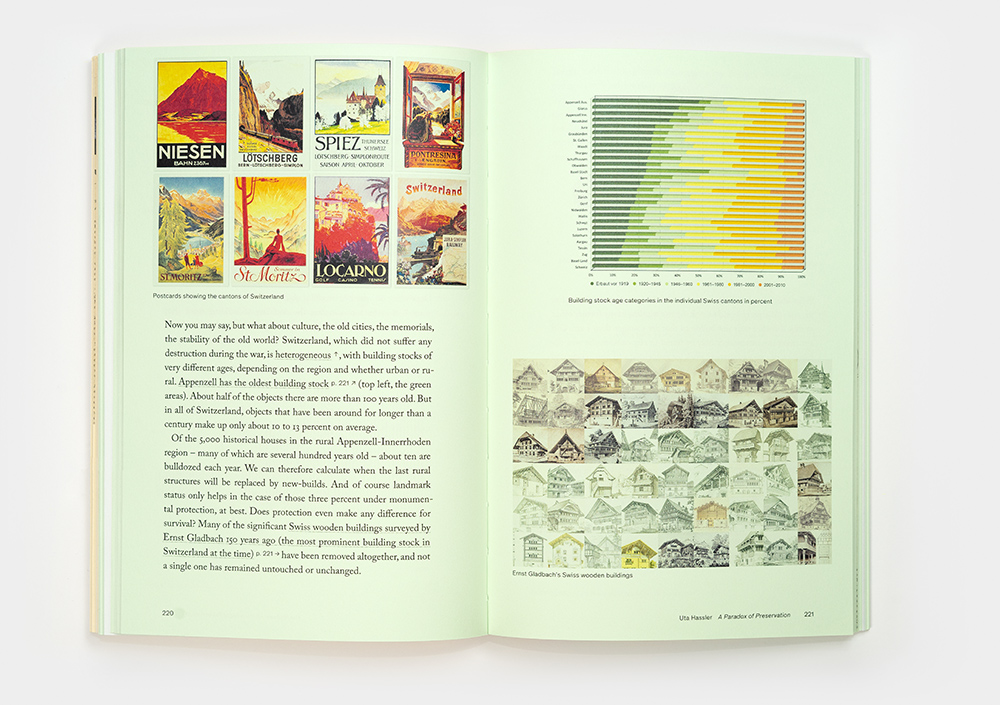
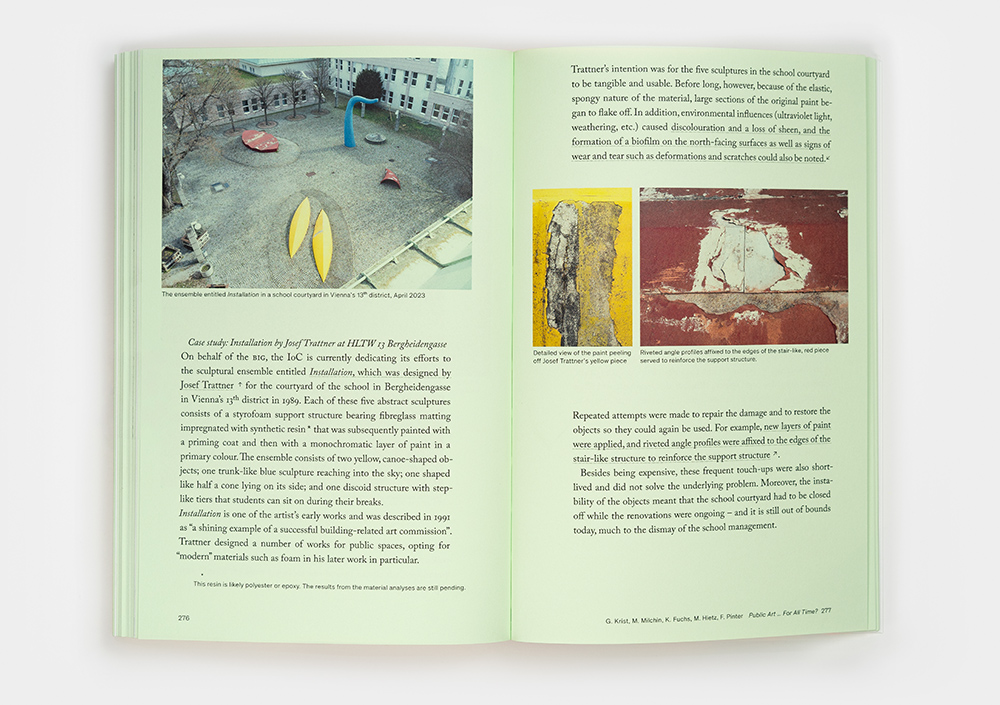
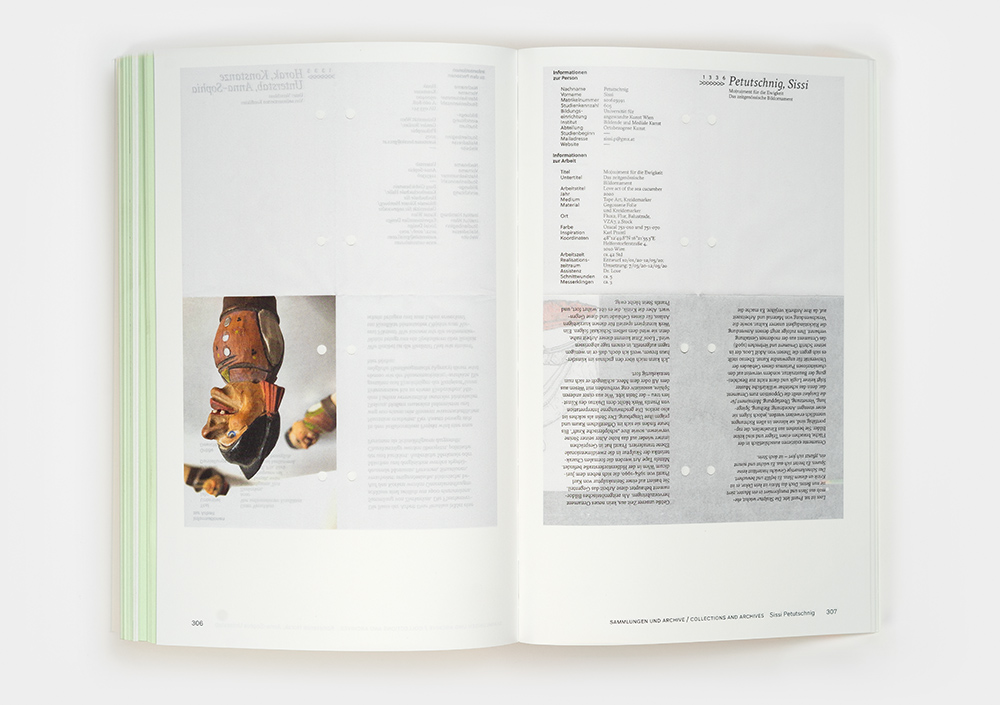
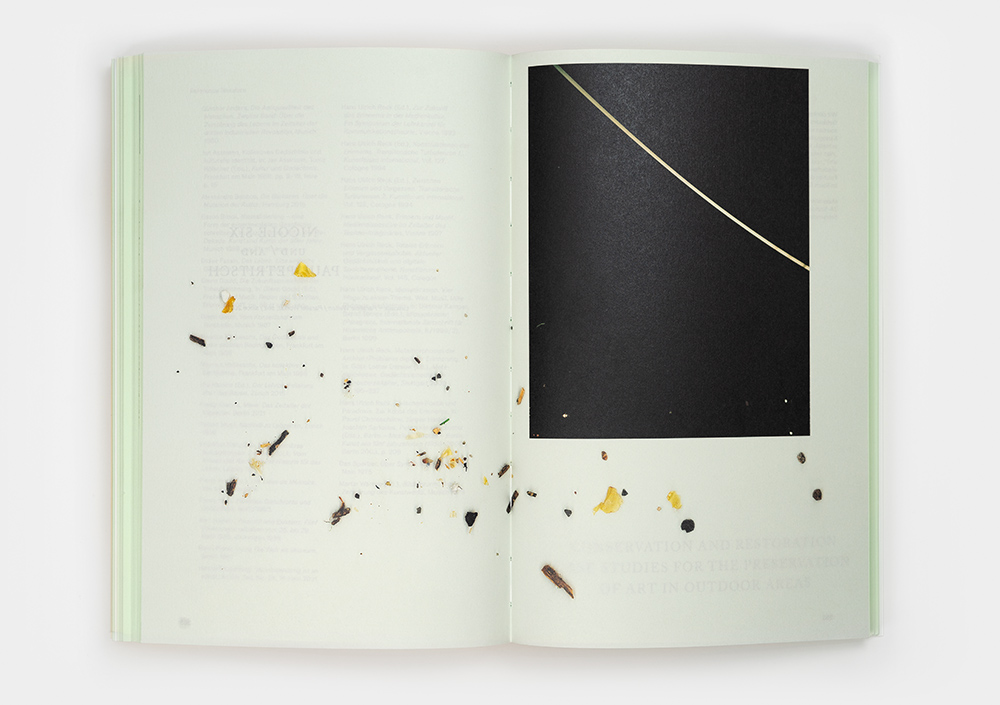
A Dialogue across disciplines
Spanning 316 pages, the book features contributions from an esteemed list of thinkers, including Hans-Peter Weiss, Cornelia Offergeld, Katrina Petter, Henrik Orrje, Cathrine Mellander Backman, Uta Hassler, Jakob Helmut Deibl, Linus Neumann, and Hans Ulrich Reck. Their texts reflect on the nature of public art, its relationship to space, memory, and society, and the mechanisms through which we attempt to record or preserve cultural presence.
Printed in 6C offset for the cover and 4C offset for the inner pages, the technical execution of the book matches its conceptual clarity, delivering a beautifully layered object that invites both intellectual and physical interaction. And whether you’re an artist, curator, or designer, The Archiving of the Presence offers a compelling look at how art in public spaces is framed, remembered, and reimagined. The book is available for purchase through Verlag für moderne Kunst .
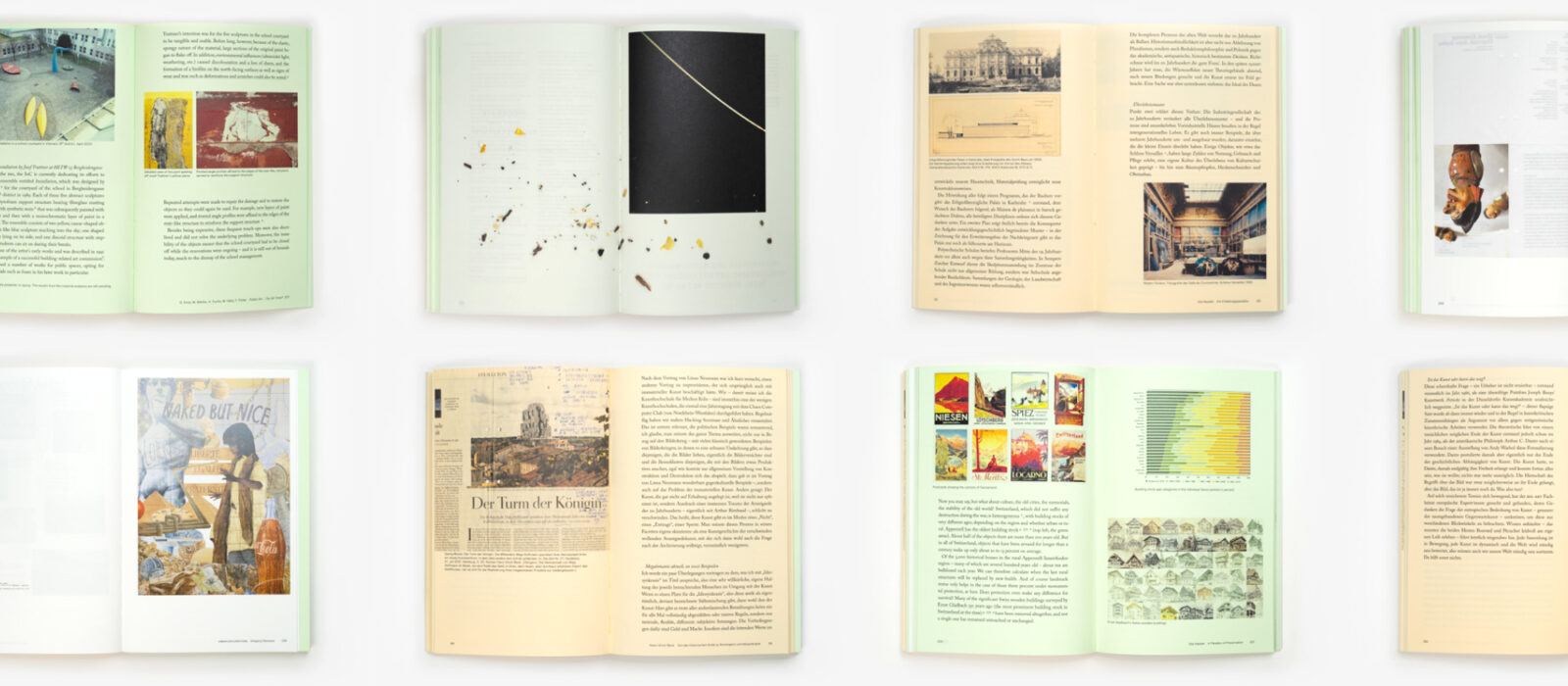
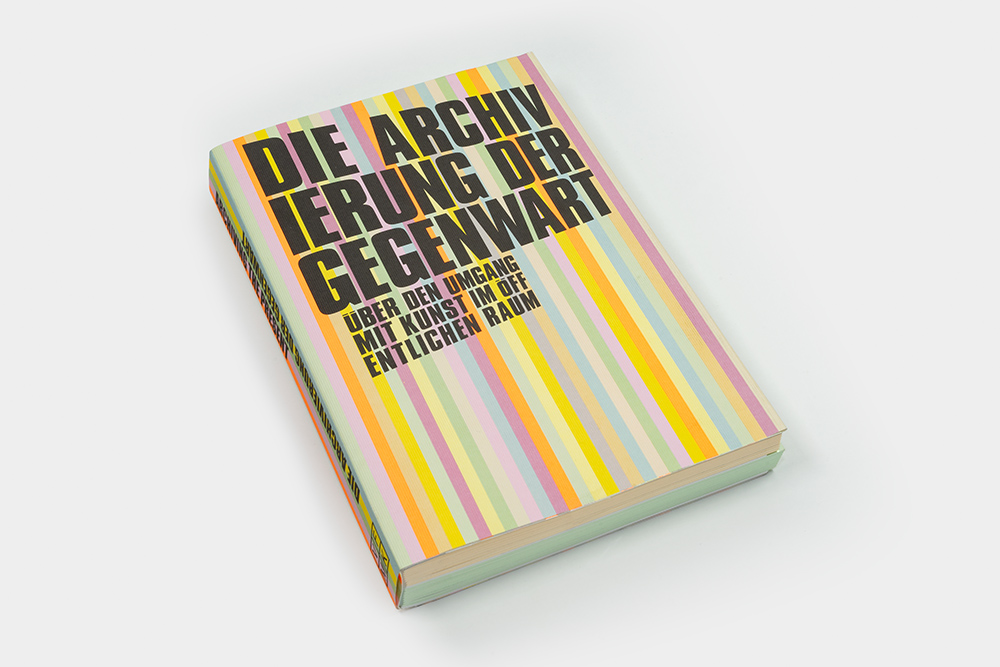
Images © Paul Gasser

